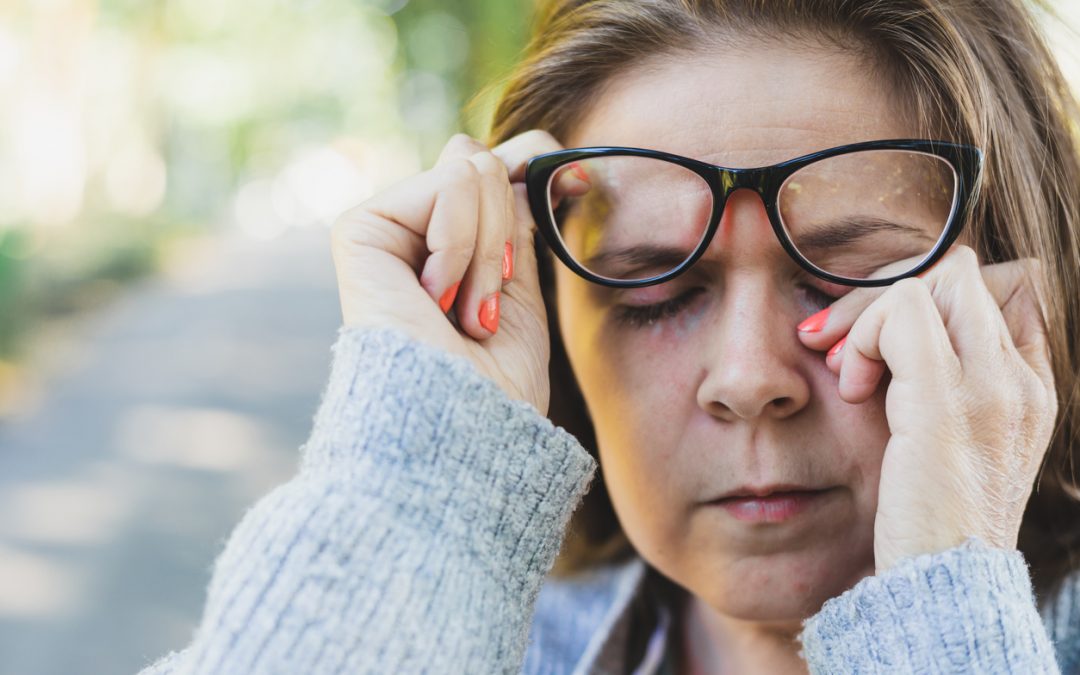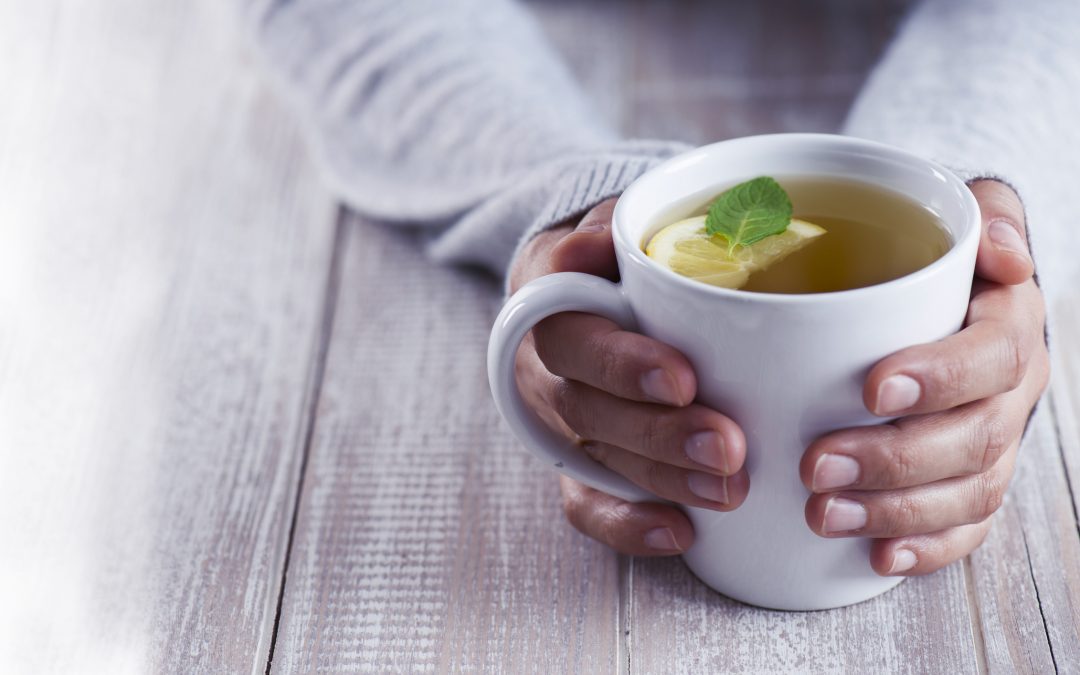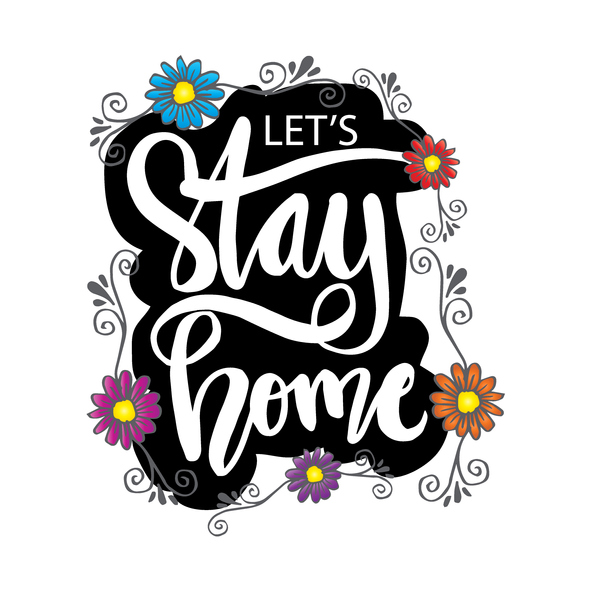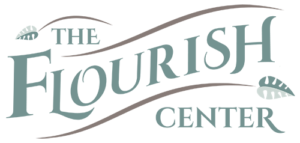
by Jen Owen, N.P. | May 15, 2020 | Integrative Medicine
I don’t know about you, but I’m still kind of in shock about everything that’s happened over the last two months. I’m sharing this vulnerable post with you in case you’ve been in a similar boat as I’ve been in. ?
It was actually kind of fun at first to know I had to stay home and I could eat and drink whatever I wanted. I honestly thought we were looking at a couple of weeks or a month at most. Here we are passing the 2 month point and obviously things are going to be very different going forward.
Over the past two weeks, that reality has started to set in for me, and I’m having to think about things differently:
What will I snack on if I don’t want to gobble down an entire bowl of popcorn anymore?
How will I create sustainable exercise when my gym is closed and I’m not sure I’ll even want to go when it opens again, since I’ll probably have to wear a mask while exercising and the sauna will likely be closed for a long time?
How do I keep myself busy and not feel lonely while we’re still supposed to continue to shelter-in-place in my county without binging on tv on the couch or drowning in social media (I’m SO sick of social media right now, aren’t you? Bleh!)?
Mostly, though, how will I deal with all of the emotions of all of this without my numbing out go-tos, like carbs, tv, and social media.
In case it helps, here’s what I’m choosing to do:
~I’ve totally cut out alcohol. I didn’t drink for 1.5 years because of the way it made me feel. I tried experimenting with it again for about 6 months. It’s alienating not to be part of alcohol culture, and yet, it’s just not for me. I don’t enjoy the weight gain, inflammation, headaches, and grumpiness I get from even a small amount. My energy and truly, my life overall, is SO much happier and vibrant without it.
~I’m eliminating foods that I know bother me and cause inflammation (if you’re not sure what I’m talking about with inflammation, check out this blog). For me this includes sugar, grains, beans, and dairy. I don’t eat a lot of these normally anyway, so it’s not too hard, but does require more planning and well, I’ve the time right now. I’ll go back to eating all of these in small amounts in about a month, but stopping them for 30 days or so will allow my gut to heal from overeating them all.
~Instead of going straight to coffee in the morning, I start the day with some warm water with lemon or apple cider vinegar. Wow! What a jolt you get from this. If you only do one thing from this list, try this and see what happens, and tell me what you think. (The coffee comes after…I’m never giving that up!)
~I’m not checking social media or email for at least an hour after I get up. I started doing morning quiet time many years ago, but recently, I’ve let myself check things on the internet when I wake up. When I do that, I immediately get into everyone else’s stuff before I even have time to get into my own. When I make time to meditate, do some deep breathing, journal, read, or something else inspiring first thing in the day, I’m better able to handle all the madness that is our reality right now.
~I let myself rest when needed. This is stressful. Whether we are experiencing extreme difficulties from this virus or not, we are all feeling extra stress. Instead of jacking up on afternoon coffee to keep going or feeling like I have to work all the time to have some control, I’m saying ‘screw it’ and I’m sitting out in the lawn chair on a nice day or just lying down on the couch and doing nothing whenever I feel like the need. And truly, I’m getting better work done rather than busy work.
~I’m being extra nice and compassionate to myself. I’m not judging myself for any of the choices I made up until recently. I coped with everything and I survived. And, I can’t sustain that lifestyle forever and get to feel the way I want to feel, so it’s onward and upward with no looking back. I’m not perfect and I know I’ll continue to numb out sometimes, so instead of beating myself up when I do, I forgive myself and get back to it.
~I’ve held off on heavy exercise while I made these changes. Change can be hard and healing is exhausting. It takes a lot of energy for your body to re-regulate after overindulgence, so I’ll worry about that part later.
I know that list might feel overwhelming to some of you. For me, I do most of these things anyway in my normal life, but when things get stressful, I forget. I go the easy way. I want to numb out rather than deal with the emotions that come up.
It’s really normal to want to push away the things that make us uncomfortable. It can feel so much easier to pour that glass of wine and keep going than let ourselves break down a little. I’d often rather eat that popcorn and butter (God, I love butter!), then cut up some veggies or fruit or satisfy my fat craving with avocado.
So, what do you want your new normal to look like? Maybe write down what your new ideal schedule and energy will look and feel like. Then, start with 1-2 things that will help you get there. Drink some lemon water in the morning, choose a food that makes you feel great over one that makes you feel like crap. Read an inspiring health book (I have a long list if you need a suggestion), reach out for help in all the amazing groups out there, find an integrative/holistic provider to see, seek counseling if you’re really stuck, take a nap, go to bed early, say no to a drink when that’s what you really want to say, call a friend when you feel sad or lonely, take a stroll instead of a power walk,.. you get the idea.
If I can help in any way, please let me know.

by Jen Owen, N.P. | May 8, 2020 | Integrative Medicine
Written by Jen Owen, our Integrative Medicine Nurse Practitioner
One of the commonalities I’ve observed in the “at-risk” groups for COVID is the common theme of chronic inflammation. In the integrative world, we’ve been looking at inflammation as a “root cause” of disease for a long time.
Inflammation can be a very good thing. If you sprain your ankle, for example, your body sends in the troops to manage the damage. Inflammation causes the swelling, redness, and heat and activates the healing processes.
Unfortunately, in today’s society of stress, processed foods, unhealthy fats, large sugar intake, and overindulgence in alcohol, inflammation becomes chronic. Those same processes that are in place to protect our bodies become overwhelmed with the jobs they have to perform to keep up with how we actually treat our bodies.
Evidence is rising to support inflammation as a root cause of coronary artery disease (CAD), type II diabetes, cancer, and Alzheimers, and I have found it to be the cause of most gut issues, chronic pain, autoimmune conditions, and more.
I won’t go into all the science here. Just know this. When the inflammatory response has to work so hard and for so long and when it’s exposed to invaders it’s not meant to deal with (think sugar, alcohol, and processed foods), the response becomes chronic. So basically, your body is in a state of constant inflammation, which is what is very likely causing weight gain, fluid retention (puffiness), joint pain, bloating, and many other symptoms, chronic disease, and making people more susceptible to infections.
I once heard someone describe working with the “root cause” of conditions like this: When you get flies from a large pile of garbage, it won’t matter how many cans of insecticide you spray, you won’t get rid of the flies until you get rid of the garbage. We have to uncover the cause of the inflammation (the garbage) before we start throwing insecticide on it (drugs, surgeries, and even supplements).
I’m not a practitioner who asks people to give up everything at once. I’d love to see that happen, but it’s not practical in today’s world. I usually start with this question, “What’s the one thing in your life that you know deep down is a problem for your health?” Almost everyone has that one thing. Just start there. Or, maybe that one thing feels too big, so start with something small and gain some traction before tackling the larger one.
Here are some simple suggestions to help:
Could your diet use some help?
Start by practicing the rainbow diet. Try to eat every color of fruits and vegetables every day. Colorful fruits and veggies are full of antioxidants which help your body reduce the chronic inflammation. And, you’ll be more full from eating foods that help and don’t hurt.
If you need help, consider working with your Functional Nutritionist, Peggy Fisher.
Is stress a large factor for you?
Try adding just 5 minutes of meditation. Download a free meditation app and allow yourself a short moment of peace and quiet. You can add one minute at a time. Even a few minutes of quieting your mind can take you out of the “fight-or-flight” high stress mode and begin to reduce inflammation from stress hormones.
If meditation is hard for you, or you need more emotional support, consider working with our Emotional Wellness & Alignment Coach, Erin Chourey.
Are you overindulging in sugar or alcohol?
Take a day off, read one of the amazing books out there about the root causes of overindulgence, and ask yourself the hard questions about why you are really overindulging. Could it be boredom, loneliness, grief, or fear of missing out? When we understand the reasons why we do things, we can find other ways to fill those needs.
Does all of this feel overwhelming?
If it feels overwhelming and like you don’t know where to begin, go and see an integrative/functional/holistic provider. We will check inflammatory markers in your blood, instead of waiting for you to have a long-term issue. If we were looking at inflammation before someone has elevated levels of blood sugar, cholesterol, or positive cancer markers, it is my belief that we could stop a lot of chronic diseases from every occurring in the first place.
If you live in Portland, I’m here to help you. Click here to learn more.
Take good care and watch out for how inflammation might be affecting you and your life. Puffiness isn’t normal, it’s your body telling you it’s working awfully hard and you can absolutely do something about it!
Please ask any questions below and let me know how I can help, and be sure to share this post with friends who might need to read it, too.
*Please note that inflammation is by far not the only root cause of risk for COVID complications. It’s one that I understand and hope to help people uncover to avoid future risk.

by Jen Owen, N.P. | Apr 30, 2020 | Integrative Medicine
At FLOURISH, our Nurse Practitioner, Jen Owen practices Integrative Medicine. She offers Primary and Specialty care for teens through older adults utilizing conventional medicine, functional medicine, herbal medicine, food medicine, mind-body medicine, and Holistic Pelvic Care™. Here’s what all of that means….
Integrative Medicine:
Integrative Medicine is the combination of modern, conventional medicine with natural and alternative medicine. It treats the whole person, including the physical, emotional, mental, social, spiritual and environmental influences that affect health through individual and personalized care. Includes a partnership between the patient and practitioner to find the root of the problem, rather than using bandaid treatments and generalized protocols. Learn more here….
Nurse Practitioner:
A Nurse Practitioner (NP) is a Masters or PhD educated Registered Nurse called an Advanced Practice Registered Nurse (APRN). Other APRNs include Certified Nurse Midwives and Clinical Nurse Specialists. NPs are state-licensed and nationally board-certified to diagnose illnesses, order labs and other testing, prescribe medications, and perform in the role of a primary care provider.
Primary Care Provider:
A primary care provider (PCP) is a licensed medical professional who provides both the first contact for a person with an undiagnosed health concern as well as continuing care for a variety of medical conditions and preventative care. PCPs act as “gatekeepers”, who regulate access to more costly procedures or specialists. The primary care provider determines the level of care that is needed, performs that care as appropriate, and makes referrals when needed.
Conventional Medicine:
Conventional Medicine is the care received in today’s modern society from hospital systems, doctors, APRNs, and another health care professionals. It is generally based on the treatment of symptoms with prescription drugs and surgeries. Conventional medicine is also known as modern, allopathic, western, mainstream, or orthodox medicine.
Functional Medicine:
Functional Medicine is a systems biology–based approach that focuses on identifying and addressing the root cause of symptoms. By addressing root cause of symptoms, rather than just treating symptoms, practitioners become oriented to identifying the complexity of disease. They may find one condition has many different causes and, likewise, one cause may result in many different conditions. As a result, Functional Medicine treatment targets the specific manifestations of disease in each individual.
Herbal Medicine:
Herbal Medicine is an ancient healing form using remedies and medicines made from plants. Herbal medicines come in the form of infusions (teas from flowers and leaves), decoctions (teas from roots and barks), extracts, capsules, steams, and more. Herbalism is based on historical uses and today, many herbs have had their efficacy proven with scientific studies. Herbs can be both effective and safe alternatives to prescription drugs, when appropriate.
Food Medicine:
Food as medicine dates back all the way to Hippocrates. Food medicine utilizes the vitamins and minerals in food to treat mild illnesses and imbalances. When we eat a “rainbow diet”, we fill ourselves with nutrient-dense foods instead of processed food and unhealthy foods. Most illnesses today are based on inflammation in the body. Healthy foods and a lower-inflammatory diet create a sustained level of wellness and is easier on the pocketbook.
Mind-Body Medicine:
Mind-Body Medicine is based on using the mind and feelings to cause a change in physical and emotional symptoms. Through techniques such as meditation, affirmations, Emotional Freedom Technique (EFT), and many others, stress is reduced. When a person experiences less stress, there’s often less inflammation and greater balance in the nervous, immune, and hormonal systems. There is a great deal of research in the positive effects of mind-body healing techniques.
Holistic Pelvic Care™
Holistic Pelvic Care™ (HPC) combines gentle, intra-vaginal massage with breathwork for wellness care and to treat imbalances in the pelvic area. Created by Tami Lynn Kent, this specialized therapeutic healing technique is a new paradigm in women’s healthcare, and is quickly becoming part of women’s regular health maintenance. HPC is helpful for pelvic and hip pain, women’s health symptoms, postpartum recovery, and for trauma release.
*HPC is helpful for all people who were born with female anatomy regardless of gender identification.

by Jen Owen, N.P. | Apr 25, 2020 | Integrative Medicine
One of the most frequent conversations I’ve had over the years with my patients is about how so many people are living most of their lives in the “fight or flight” response, the sympathetic nervous system.
The sympathetic nervous system is designed to help us in an emergency, like when we are running from a bear. When we become stressed, the amygdala in the brain, the center of emotional processing senses danger. As it processes this information, it sends distress signals to the hypothalamus. The hypothalamus communicates with the adrenal glands that there is a danger. The adrenals then release epinephrine (adrenaline), which circulates through the body and causes physiological changes. These changes are meant to give us increased alertness, increased energy, and increased muscle strength to maximize our chance of survival in an emergency situation.
The sympathetic physiological changes include:
Decreased saliva output
Decreased gastric secretions (bile and hydrochloric acid)
Decreased peristalsis (movement of the large intestine which produces a bowel movement)
Increased heart rate and irregular heart rhythms
Constriction of the arteries
Dilation of the lung bronchi
Increased oxygen to the vital organs and away from the non-vital areas of the body
Using glycogen to make more glucose
Inhibited bladder contraction causing decreased urine output
Increased pupil size and increases peripheral vision
This system is designed to be alerted every once and awhile and is not meant to work full-time. As the world becomes more stressed, many are alerting this system numerous times in one day or are basically “running from a bear” all the time. When these normal and helpful physiological changes become part of our daily lives, the repeated activation takes its toll on the body and many symptoms can arise.
These symptoms include:
Irregular and rapid heart rate and palpitations
Elevated blood pressure
Increased blood sugar, which leads to insulin resistance and type II diabetes
Cold hands and feet
Numbness and tingling in the extremities
Trouble concentrating
Startling easily, nervousness, and fear, leading to anxiety and panic
Blurry vision, reading issues
Elevated cholesterol
Heart disease
Constipation, abdominal bloating, abdominal pain
Urinary issues, frequent infections
Insomnia
What’s likely making all of this worse in these times is the way many people respond to stress by overeating carbs, drinking alcohol, binging on sugar, etc. When we’re in fight-or-flight, cravings increase. We need more sugary substances to maintain the elevated blood sugar and cortisol levels. We self-soothe temporarily and then we usually feel even worse. Sound familiar?
The first thing I recommend if you feel like you are in a constant state of sympathetic stress is awareness. Start to notice when these physiological changes are happening in your body. What are the triggers for you? You have to be aware of what is happening before you can change. Maybe it’s a phone call from a certain person, watching the news, scrolling through social media, or homeschooling your kids? It could be just about anything. If current circumstances are causing you to live in a constant state of stress, notice this. Notice without judgement, because our own judgement of ourselves can even put us in fight or flight.
When we are relaxed and calm, we are in the parasympathetic nervous system mode, often called, “rest and digest”. This is where we should be all the time, unless we are in a true emergency, like running from a bear.
When the parasympathetic nervous system is dominant, we experience these physiological processes:
Arteries dilated = decreased heart rate and blood pressure
Bladder contracts = urine flows normally
Increased peristalsis = bowels move at least once daily
Increased saliva and increased gastric secretions = no bloating or pain
Bronchi in the lungs are constricted leading to increased oxygen to all parts of the body = warm hands and feet and no neuropathy (numbness/tingling)
Decreased stress hormones = calm mood, restful sleep
Proper utilization of glucose = lower blood sugar, reduced insulin levels, less cravings
Once we have non-judgmental awareness of how we are reacting to stress, we can begin to do something about it. Are you living in the now or worrying about the future? Are you breathing throughout your day? Are you moving your body every day? Are you spending some time in nature every day? What about fresh air? Do you have a support system in place to decrease your stress? How much balance do you have in your life right now? Are you celebrating the good things in your life every day? Are you listening to your true inner guidance or are you trying to be what you think society or your family wants you to be?
Here are some suggestions to add to your daily life to stay in “rest and digest” mode:
Take a bath
Meditate (even 5 minutes of quiet time can be beneficial!)
Spend time being grateful for what you have now
Move your body
Laugh
Dance
Breathe. Use 4-7-8 breathing throughout the day (breath in for 4 counts, hold for 7 counts, breath out for 8 counts—repeat 4 times through)
And, if you’d like to take a closer look at how stress is affecting your body, please schedule an appointment with me. We can take a look at your blood sugar and insulin levels, cortisol levels, improve digestion, and address your stress head-on. There are many ways to encourage “rest and digest” in your body. My toolbox is full of help for you.
Please share this post widely and sign-up for our weekly newsletter below if you’re not already signed up.

by Jen Owen, N.P. | Mar 27, 2020 | Integrative Medicine
Adaptogen Herbs
There’s a lot of information going around right now about how to support the immune system with herbs and supplements. That’s great, yet we need to also be addressing one of the main causes of immune system dysregulation: stress. One of the best ways to counteract the negative effects of stress on the body is by taking adaptogens.
Adaptogens are herbs that help the body better respond to stress. They work by affecting the hypothalamic-pituitary-adrenal (HPA) axis and by tonifying the nervous system. Basically, they affect the parts of the body most involved in responding to and dealing with stress, be it physical, emotional, or environmental. Most adaptogens also have immune system benefits.
Adaptogens are currently being studied for their effects on depression, fatigue, anxiety, inflammation, toxicity, and more, and have been used for centuries by natural healers for their ability to protect the nervous system.
Today I’m going to discuss the top 5 adaptogens I most often prescribe in my Integrative Medicine practice. As with any new addition to your healthcare regimen, it’s best to check with your healthcare provider before starting to make sure the herb is right for you and won’t interact with any of your medications. For dosing, I recommend starting with the smallest dose possible the first dose to make sure you don’t have any negative effects from taking it, and then follow the instructions on the product you choose for regular dosing.
Ashwagandha (Withania somnifera)
Ashwagandha is an herb from Ayurveda. It helps with anxiety, insomnia, joint & muscle aches, fatigue, and exhaustion. It also seems to have a balancing effect of the immune system and helps with low thyroid function. Ashwagandha has a rejuvenating effect on the entire body. It helps support deep sleep and improves brain function.
Eleuthero (Eleutherococcus senticosis)
Eleuthero is a form of ginseng, but doesn’t have the stimulating or short-acting effects of other types of ginsengs. It helps when feeling overstressed as it can reduce cortisol (stress hormone) levels. Eleuthero helps in stopping the inflammatory response that happens with chronic stress and helps keep you going mentally and physically. It can also be helpful to reduce stress headaches and help you sleep during stressful times.
Holy Basil (Ocimum sp.)
Holy Basil (Tulsi) is another herb from Ayurveda. It helps with improving memory, fatigue, depression, anxiety, some respiratory issues, and may help protect the gut from stress-induced conditions. It seems to help increase endurance and improve immune system function. There are several different forms of Holy Basil in the Ayurvedic tradition, each with subtle differences.
Reishi (Ganoderma lucidum)
Reishi is known as the “mushroom of immortality”. It’s helpful for overall wellness, balanced energy, and for calming the nerves. It’s a powerful immune system booster and is being studied for possible effects on cancer. It likely protects the liver and helps to decrease overall inflammation in the body. I use it often when a person’s spirit seems disrupted.
Rhodiola (Rhodiola rosea)
Rhodiola helps with stress, depression, impaired brain function, fatigue, and to improve immune function. Many countries consider it a rejuvenative plant. Rhodiola can be somewhat stimulating so should be used with caution in nervous anxiety and it may cause insomnia in some people. It’s better for those who are feeling depleted with very low energy.
Each of these herbs has many other uses. This is in no way an exhaustive list. I’m focusing on the functions that might be most helpful during these trying times. There are also many other adaptogens available. These are my favorite five. I hope they can be of use to you during this stressful period in our lives. Herbs are a mainstay of my primary & specialty care practice. For more information on becoming a patient, please click here.

by Jen Owen, N.P. | Mar 12, 2020 | Integrative Medicine
Last week, I wrote an article expressing my perspective on the COVID-19 “coronavirus” virus. I continue to stand by everything in that article for keeping yourself safe from illness and keeping your immune system strong. Since that time, we have more information from both China and Italy, which warrant a different and more conservative response.
First, I’ve learned a great deal more about how this virus is spread. I’ve always been taught that you are most contagious when you have a fever. This is definitely true and with this virus in particular, you are also contagious before you have symptoms. And, some people never even have symptoms. If it helps, think about the herpes virus. You can show no signs of a cold sore or genital lesion and still “shed” the virus to your partner. That’s why the herpes virus (yes, it’s a virus) is so contagious. You don’t know you’re giving it to someone because you have no symptoms. The latest data is showing that the COVID-19 virus causes symptoms right around 5 days after exposure. That means that for 5 days, you are potentially infecting everyone you meet. Even worse, it’s thought that this virus may be able to survive in the air on dust particles.
Second, I see so many people stating, “it’s only deadly to the elderly”. This is not true. It could be deadly for anyone with a respiratory or other chronic condition. How many people can you name right now who have asthma? They are at risk, as well as people with many heart-related conditions, diabetes, and more.
One of the big differences between this virus and regular seasonal flus is that everyone is getting sick around the same time. What’s happening in Italy is that the hospitals are overwhelmed. When I worked in the hospital in my last community, we would have 1-4 patients on a ventilator at one time. I have no idea how many ventilators were actually available, but I bet it wasn’t that many. If respiratory distress happens to hundreds or thousands at once, healthcare providers have to choose who gets a ventilator and who doesn’t. I’m thankful that’s not my decision to make!
I’m so proud of our leaders for canceling large events. I also feel we should go ahead and cancel non-essential events of all sizes. If we stop the spread, we won’t overwhelm our hospitals and we’ll keep our elderly and others with chronic conditions safe. I keep seeing people posting in events that if you’re sick, don’t come. I believe this is missing the boat–remember, you’re contagious before you have symptoms.
All of this said, I don’t think panic is necessary. I love people’s ideas of how to support their communities, like buying gift cards now to use later. My husband and I both own small businesses. Our concern for our finances over the next month is real. I’m already seeing a decline in the number of wellness visits at my clinic. At the same time, I feel strongly that if we quarantine ourselves for a short-time, we could possibly avoid a longer term crisis.
My parents are turning 80 this year. That makes them elderly and yet, they still have a wonderful quality of life. I surely don’t want this virus to be the end of them. Let’s not panic. Let’s be smart. Let’s make it a priority to protect each other. Stay home right now as much as possible and if you do go out, take care to protect yourself and those around you.
Please comment below if you have any further helpful additions to this. You can also sign up for my newsletter at the bottom of this page. I’ll be updating everyone best I can as new information comes to light.







Recent Comments